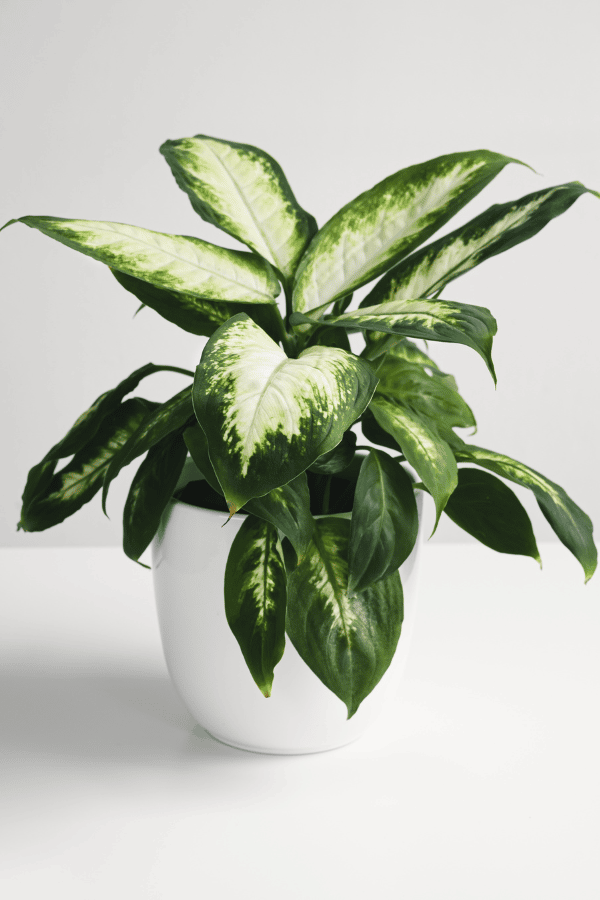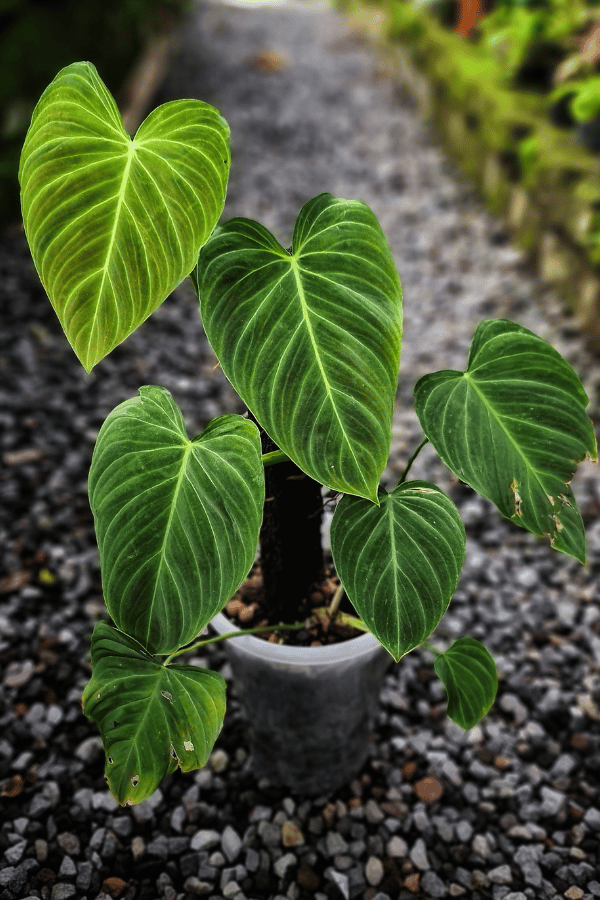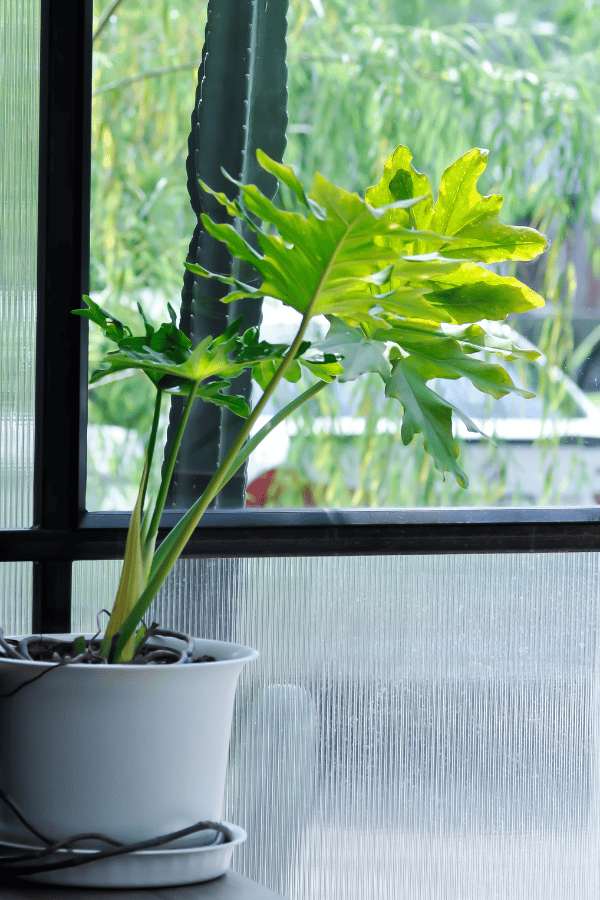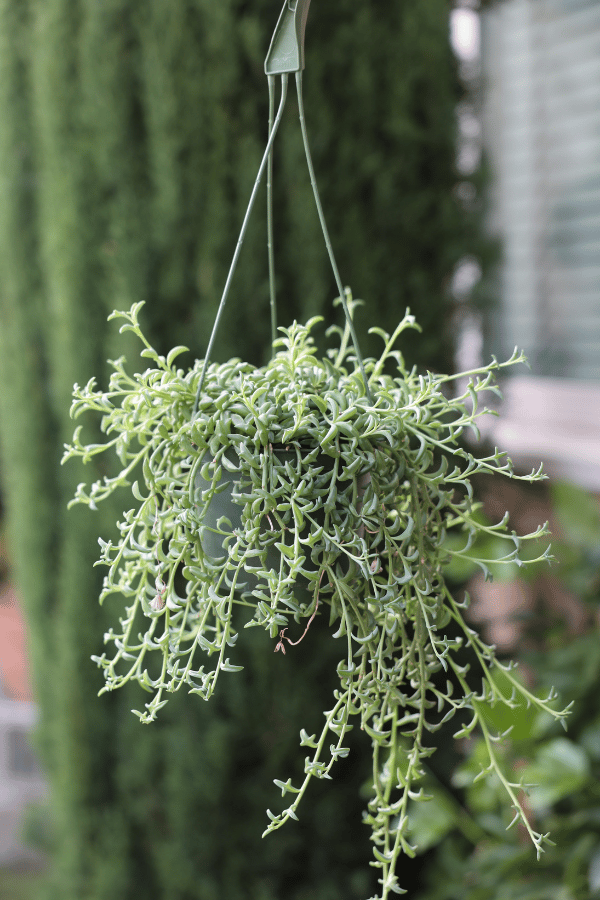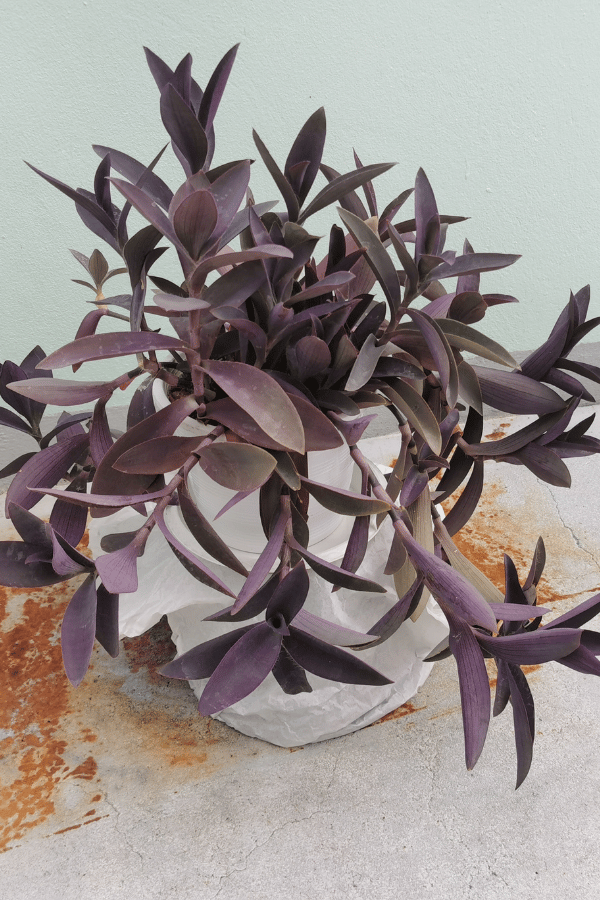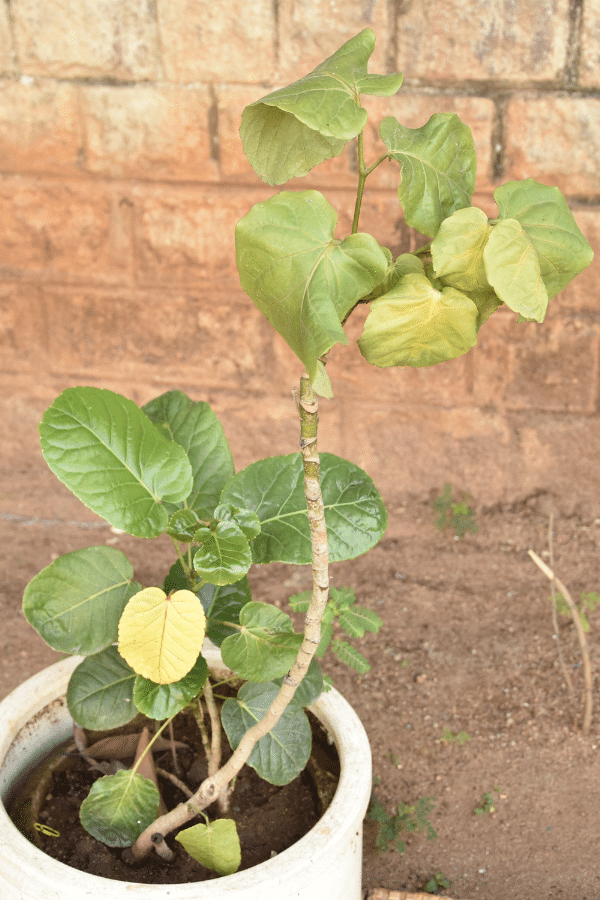Rubber Plant
Scientific Name: Ficus Elastica
The rubber bush, rubber fig, rubber plant, or rubber tree, however you want to say it, is a gorgeous houseplant with large, lush green to burgundy leaves. It’s a fairly easy to care for houseplant, but there are certain rubber plant care items you must know to grow the best rubber tree you can.
Below we will dive deeper into how to care for a rubber plant.
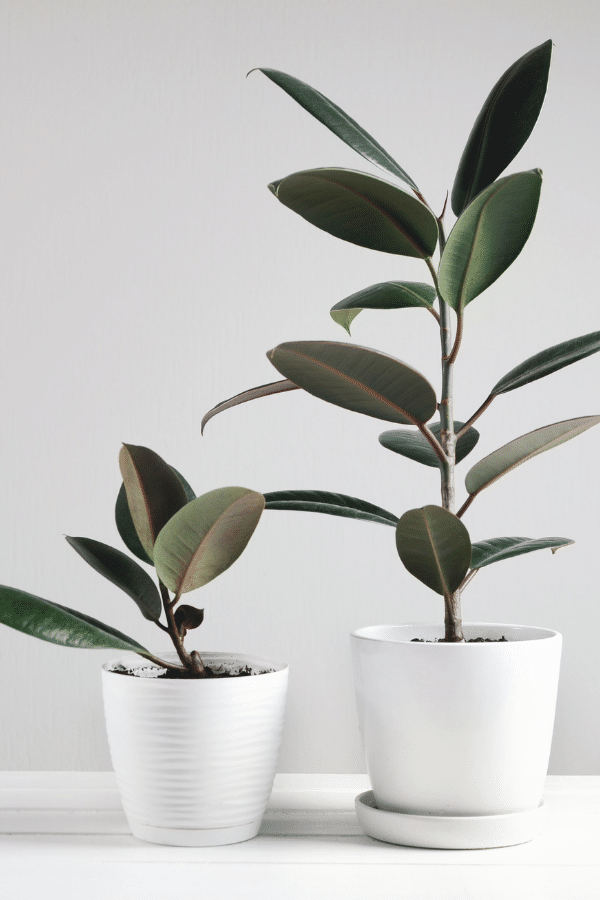
Rubber Plant History
The rubber plant is native to India and Malaysia. The subtropical climate of these locations creates a hot and humid environment for the rubber plant to grow and thrive in nature. Creating a similar environment in your house will help this houseplant to grow well.
Rubber Plant Identification
The leaves of rubber plants are dark green, sometimes purple or burgundy can be found in the leaves as well. The leaves are large, thick, and sturdy. The large green leaves are what set this ficus elastic apart from other houseplants.
Rubber Plant Growth Facts
The rubber plants growth is a lot different whether it’s grown outdoors in nature in its natural element or as a houseplant.
How Big Does a Rubber Plant Get?
As a houseplant, the rubber plant can grow 6 to 10 feet tall and about 10 inches wide. Be sure to give this plant enough overhead space for it to grow this tall or else the plant will grow rather short and a bit wider. In its natural environment, the rubber tree can grow to be up to 100 feet tall!
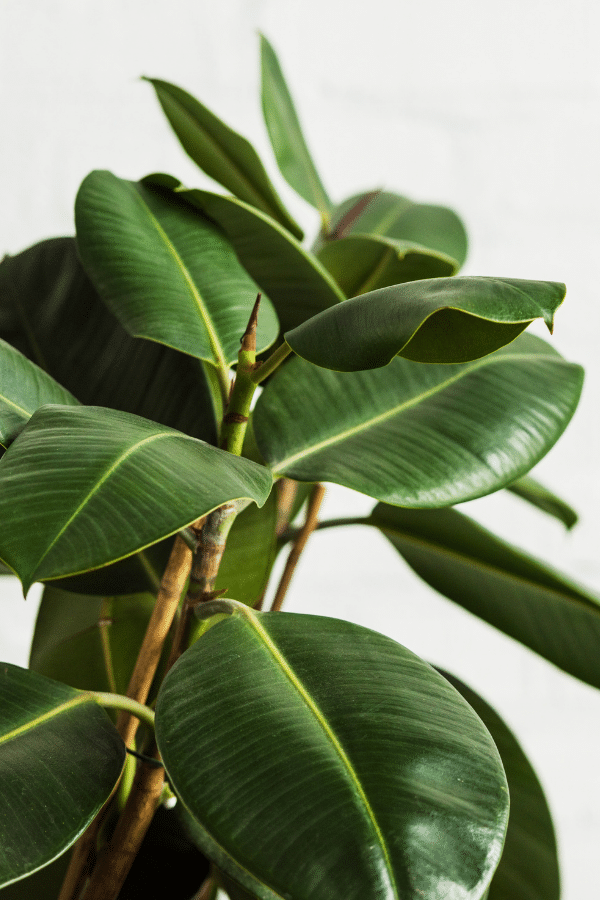
Rubber Plant Care
Best Soil for Rubber Plant
The rubber tree needs well-draining soil. Be sure to plant in a pot that has drainage holes and opt for a larger pot to allow the roots to grow deep and the rubber plant to grow tall.
Rubber plants really like potting soil that is a pH of 5.5 to 7, slightly acidic to neutral. Sometimes regular houseplant soils don’t do the best job, so mixing your own soil for your rubber tree houseplant is best. Mix together 1 part peat moss with 2 part sand. Sand will help this rubber tree to stand tall and firm based on the size these plants can get.
Fertilizer
The rubber tree will appreciate a good fertilizer. Fertilize this plant once in early spring. You can also fertilize it a second time a couple of months into summer. Don’t fertilize your houseplants in winter as this can cause the plant to get brown leaves.
Watering
In the summer while this plant is producing new growth, keep the rubber tree damp. When watering, water it completely until water comes out of the drainage holes. During the winter when this plant goes into dormancy, keep the soil on the drier side and be sure to let it dry out completely for the best rubber plant care.
Sun & Shade
Rubber plants will thrive in bright, indirect light. Be sure to find a good home for them in your house, as they don’t do well with change and like to stay put once they have a spot. Filtered sunlight will be the best lighting conditions for this plant as direct sunlight can burn the leaves.
Temperature & Humidity
The rubber tree likes average household temperatures, making them a perfect houseplant. 60-85F is the optimal temperature for the rubber plant. In the winter when there’s low humidity and moisture level, put a humidifier next to it to ensure adequate humidity levels.
Repotting
Repotting rubber plants depends on how yours is growing. Rubber plants are not a houseplant that needs to be repotted every year. They can be finicky and they don’t like change. If you have a small rubber plant and it’s overgrown, you should repot in a pot where it can grow more. Never repot in winter, save the repotting for spring. If your rubber tree looks like it’s in a good size pot for its size, it can stay in that pot for around 2-4 years.
Maintenance & Pruning
To maintain this houseplant, be sure to wipe off the leaves weekly so the leaves can absorb the filtered sunlight and grow. You don’t have to prune this houseplant, but you can if you want to change the look of it. You can prune the rubber plant to grow however you would like the plant to look like. When pruning, cut above the leaf nodes. Be sure to prune the entire plant when pruning to give it an overall even look to it. You can also prune it to propagate, which we talk about in the next section.

Propagating Rubber Plant
Propagating a rubber tree can be especially tricky because of the milky white sap it secretes from its stems. Wear gloves and/or wash hands immediately after propagating the rubber plant. Always propagate in the spring or summer. If propagating a rubber tree in fall or winter, it won’t grow as it should. Rubber plants can be propagated via air layering or in water.
Rubber Plant Toxicity
As rubber plants were grown to make rubber before synthetics, the sap this plant produces is poisonous to humans and pets. It can cause an upset stomach, diarrhea, vomiting if ingested. It will also cause skin irritation if bare skin is exposed to the plant.
Toxicity to Humans
Keep this plant out of reach of children. The rubber plant is toxic if ingested.
Toxicity to Cats & Dogs
If ingested, the rubber plant is toxic to cats and dogs.
Rubber Plant Problems
Rubber Plant Leaves Turning Yellow
When a rubber plant leaves turn yellow, that indicates the plant has been overwatered. When in doubt, always underwater the rubber tree to keep it looking healthy.
Rubber Plant Leaves Turning Brown
Leaves that are turning brown on a rubber tree mean that the plant has been overwatered. If the leaves have started to droop, and you can notice a rotting smell coming from the soil, this indicates root rot has occurred in the plant. Repot right away and knock off all of the current soil to ensure the fresh soil nutrients the plant well.
Rubber Plant Diseases
Root rot is a very common rubber plant disease, much like any other common houseplant. Other rubber plant diseases include anthracnose and leaf spots. Anthracnose is a fungal disease that happens when plants are overwatered, the fungus can set in and kill the plant. You can notice this fungal disease by the leaves curling in. Leaf spots is a bacterial disease that’s a little harder for the plant to get. The bacteria has to get in from an open wound on the plant. It will cause the leaves edges to turn yellow and it will look like there are hard water spots on the leaves surface if infected.
The best way to prevent rubber plant diseases is prevention. If you notice something is wrong with your plant, do your research and spray a fungicide on it to kill the diseases.
Rubber Plant Pests
Aphids, mealy bugs, and scale are some of the pests that can affect the Ficus Elastica. Take action right away when you find these pests on your rubber plant. You can sometimes wipe them off before they start to really infect the plant if caught early on. Alternatively, if the infestation is bad, neem oil can be sprayed on the plant to get rid of the houseplant pests.

